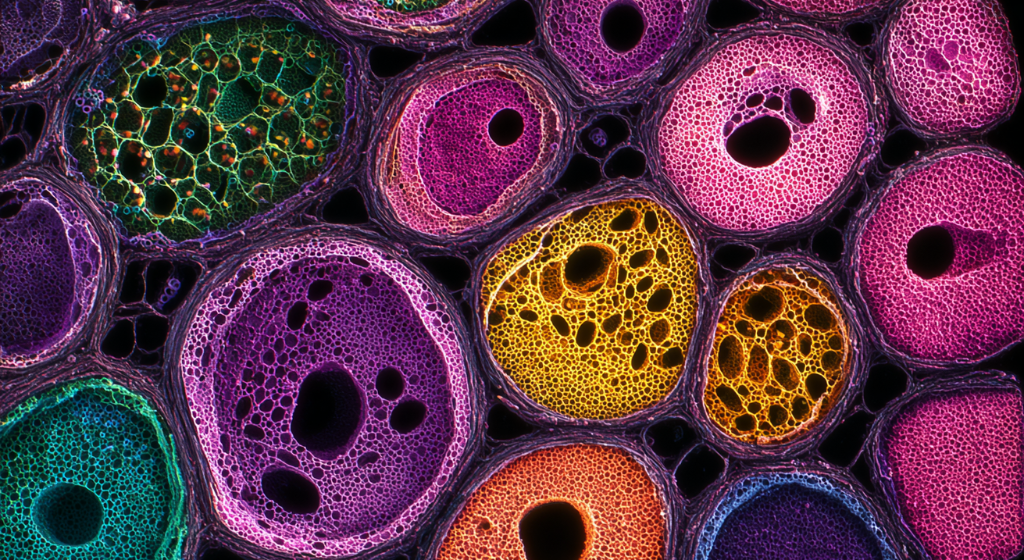
MIT, Harvard, and the Broad Institute have created an AI system called PUPS that predicts the location of any protein within any human cell at single-cell resolution, promising faster, more precise disease diagnosis, drug discovery and biological research. (Source: Image by RR)
Potential Applications for Model Include Drug Target Identification and Diagnostics
Researchers from MIT, Harvard University, and the Broad Institute have developed an AI model capable of predicting the location of virtually any protein within a human cell, even for proteins and cell lines never tested before. The system, called PUPS (Protein Unseen Prediction of Subcellular location), combines a protein language model with a specialized computer vision model to pinpoint protein positions at the single-cell level—an advance that could accelerate disease diagnosis, drug discovery, and biological research.
Proteins, as noted in news.mit.edu, play crucial roles in cellular function, and their misplacement within cells has been linked to diseases such as Alzheimer’s, cystic fibrosis, and cancer. Manually mapping the locations of the approximately 70,000 proteins and variants in a human cell is expensive and time-consuming; existing datasets like the Human Protein Atlas cover just 0.25% of possible protein–cell line combinations. PUPS fills this gap by processing a protein’s amino acid sequence along with stained images of a cell’s nucleus, microtubules, and endoplasmic reticulum, generating an image that highlights the predicted protein location.
Unlike many existing models, PUPS can generalize across both unseen proteins and unseen cell lines, enabling it to detect changes in localization caused by unique protein mutations. The team validated PUPS’ predictions through laboratory experiments and found that it consistently outperformed baseline AI methods, delivering lower prediction error and nuanced localization results that reflect cell-to-cell variation. The system’s ability to make fine-grained, single-cell predictions could also reveal how treatments alter protein distribution in specific disease contexts.
Looking ahead, the researchers aim to extend PUPS to model protein-protein interactions, predict the location of multiple proteins simultaneously, and eventually operate on living human tissue rather than just cultured cells. Published in Nature Methods, the project received support from multiple institutions, including the NIH, NSF, and the Eric and Wendy Schmidt Center, and represents a leap forward in AI-powered biomedical research—allowing scientists to run “virtual experiments” that could save months of lab time.
read more at news.mit.edu







Leave A Comment